#okeano turtles
Text

The first contact
92 notes
·
View notes
Link
A water deity is a deity in mythology associated with water or various bodies of water. Water deities are common in mythology and were usually more important among civilizations in which the sea or ocean, or a great river was more important. Another important focus of worship of water deities has been springs or holy wells.
As a form of animal worship, whales and snakes (hence dragons) have been regarded as godly deities throughout the world (other animals are such as turtles, fish, crabs, and sharks). In Asian lore, whales and dragons sometimes have connections.[1]Serpents are also common as a symbol or as serpentine deities, sharing many similarities with dragons.
Ainu mythology
Amemasu, monster in the lakes
Repun Kamui, god of the sea, often referring to orca
Canaanite mythology
Yam (god), sea god
Dogon mythology
Nommos, amphibious spirits that are worshiped as ancestors
Egyptian mythology
Anuket, goddess of the Nile and nourisher of the fields
Hapi, god of the annual flooding of the Nile
Khnum, god of the Nile
Nephthys, goddess of rivers, death, mourning, the dead and night
Nu, uncreated god, personification of the primordial waters
Osiris, god of the dead and afterlife; originally god of water and vegetation
Satet, goddess of the Nile River's floods
Sobek, god of the Nile river, depicted as a crocodile or a man with the head of a crocodile
Tefnut, goddess of water, moisture and fertility
Greek mythology
Main article: Greek sea gods
Achelous, Greek river god
Aegaeon, god of violent sea storms and ally of the Titans
Alpheus, river god in Arcadia
Amphitrite, sea goddess and consort of Poseidon and thus queen of the sea
Anapos, water god of eastern Sicily
Brizo, goddess of sailors
Carcinus, a giant crab who allied itself with the Hydra against Heracles. When it died, Hera placed it in the sky as the constellation Cancer
Ceto, goddess of the dangers of the ocean and of sea monsters
Charybdis, a sea monster and spirit of whirlpools and the tide
Cymopoleia, a daughter of Poseidon and goddess of giant storm waves
Doris, goddess of the sea's bounty and wife of Nereus
Eidothea, prophetic sea nymph and daughter of Proteus
Electra, an Oceanid, consort of Thaumas
Eurybia, goddess of the mastery of the seas
Galene (Γαλήνη), goddess of calm seas
Glaucus, the fisherman's sea god
Gorgons, three monstrous sea spirits
The Graeae, three ancient sea spirits who personified the white foam of the sea; they shared one eye and one tooth between them
Hippocampi, the horses of the sea
The Ichthyocentaurs, a pair of centaurine sea-gods with the upper bodies of men, the lower fore-parts of horses, ending in the serpentine tails of fish
Leucothea, a sea goddess who aided sailors in distress
Nerites, watery consort of Aphrodite and/or beloved of Poseidon
Nereus, the old man of the sea, and the god of the sea's rich bounty of fish
Nymphs
Oceanus, Titan god of the Earth-encircling river Okeanos, the font of all the Earth's fresh-water
Palaemon, a young sea god who aided sailors in distress
Phorcys, god of the hidden dangers of the deep
Pontus, primeval god of the sea, father of the fish and other sea creatures
Poseidon, Olympian god of the sea and king of the sea gods; also god of flood, drought, earthquakes, and horses. His Roman equivalent is Neptune.
Potamoi, deities of rivers, fathers of Naiads, brothers of the Oceanids, and as such, the sons of Oceanus and Tethys.
Proteus, a shape-shifting, prophetic old sea god, and the herdsman of Poseidon's seals
Psamathe, goddess of sand beaches
Scylla, a sea monster, later authors made up a backstory of her being a Nereid transformed into a monster due to Circe's jealousy
The Telchines, sea spirits native to the island of Rhodes; the gods killed them when they turned to evil magic
Tethys, Titan goddess of the sources fresh-water, and the mother of the rivers (Potamoi), springs, streams, fountains and clouds
Thalassa, primordial goddess of the sea
Thaumas, god of the wonders of the sea and father of the Harpies and the rainbow goddess Iris
Thetis, leader of the Nereids who presided over the spawning of marine life in the sea, mother of Achilles
Triteia, daughter of Triton and companion of Ares
Triton, fish-tailed son and herald of Poseidon
Tritones, fish-tailed spirits in Poseidon's retinue
Euryale
Medusa
Stheno
Naiades, fresh water nymphs
Nereides, sea nymphs
Oceanides, nymphs of freshwater sources
Hittite mythology
Aruna, god of the sea
Hatepuna, daughter of the sea
Hindu/Vedic mythology
Ap, group of water goddesses
Apam Napat, god of fresh water, such as in rivers and lakes
Danu, goddess of primordial waters, mother of Vritra and the Danavas
Ganga, goddess of the Ganges river and purity
Makara, mystical creature of waters
Matsya, the fish avatar in the ten primary avatars of Hindu god Vishnu
Sarasvati, goddess of knowledge, the Sarasvati river, and everything that
Tapti, goddess of Tapti river
Varuna, god of the water and the celestial ocean
Yami, goddess of Yamuna river
Mesopotamian mythology
Abzu, god of fresh water, father of all other gods
Enbilulu, god of rivers and canals
Enki, god of water and of the river Tigris
Marduk, god associated with water, vegetation, judgment, and magic
Nammu, goddess of the primeval sea
Nanshe, goddess of the Persian Gulf, social justice, prophecy, fertility and fishing
Sirsir, god of mariners and boatmen
Tiamat, goddess of salt water and chaos, also mother of all gods
Norse/Germanic mythology
Ægir, personification of the sea
Freyr, god of rain, sunlight, fertility, life, and summer
Nehalennia, goddess of the North Sea
Nerthus, mostly an earth goddess, but is also associated with lakes, springs, and holy waters
Nine Daughters of Ægir, who personify the characteristics of waves
Nix, water spirits who usually appear in human form
Njord, god of the sea, particularly of seafaring
Rán, sea goddess of death who collects the drowned in a net, wife of Ægir
Sága, wisdom goddess who lives near water and pours Odin a drink when he visits
Tiddy Mun, a bog deity once worshiped in Lincolnshire, England who had the ability to control floods
Persian/Zoroastrian mythology
Ahurani, Ahurani is a water goddess from ancient Persian mythology who watches over rainfall as well as standing water
Anahita, the divinity of "the Waters" (Aban) and associated with fertility, healing, and wisdom
Apam Napat, the divinity of rain and the maintainer of order
Haurvatat, the Amesha Spenta associated with water, prosperity, and health in post-Gathic Zoroastrianism
Tishtrya, Zoroastrian benevolent divinity associated with life-bringing rainfall and fertility
Roman mythology
Coventina, Romano-British goddess of a sacred spring at Carrawburgh on Hadrian's Wall
Fontus, god of wells and springs
Juturna, goddess of fountains, wells, and springs
Neptune, god-king of the sea. His Greek counterpart was Poseidon.
Salacia, goddess of salt water. Neptune's consort.
Tiberinus, the genius of the river Tiber.
Volturnus, a god of the Tiber who may originally have been a god of all rivers
Island Nations mythology
Agunua, serpentine god of the sea of Solomon Islands
Ayida-Weddo, serpentine spirit among several island nations
Taíno mythology
Atabey (goddess), Mother goddess of fresh water and fertility. Female counterpart of the god Yúcahu.
Western European mythology
Aspidochelone, colossal sea monster from the medieval bestiary Physiologus
Davy Jones, the Devil of the seas in Western piratical lore
See also
Holy wells
Nadi (yoga)
Nature worship
Sea monster
Water chakra
Water spirit
4 notes
·
View notes
Photo

A California sea lion hunts for fish on a kelp paddy at Cortes Bank.
WHY IT'S IMPORTANT TO SAVE OUR SEAS' LAST
PRISTINE PLACES
By Cynthia Barnett
Photographs by Brian Skerry

A California sheephead and other fish nose through the kelp forest and coralline algae on Cortes Bank.

A bat ray cruises through the brilliant garden of surfgrass and golden kelp along the ridge at Cortes Bank.

The protected elkhorn corals at Buck Island Reef National Monument.
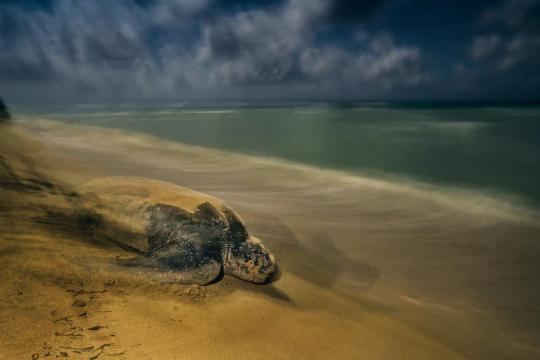
A leatherback sea turtle leaves the beach where she laid her eggs at Sandy Point National Wildlife Refuge, a few miles from Buck Island on St. Croix.
PHOTOGRAPHS BY NORTHEAST U.S. CANYONS 2013 SCIENCE TEAM, NOAA OKEANOS EXPLORER

A deeplet sea anemone
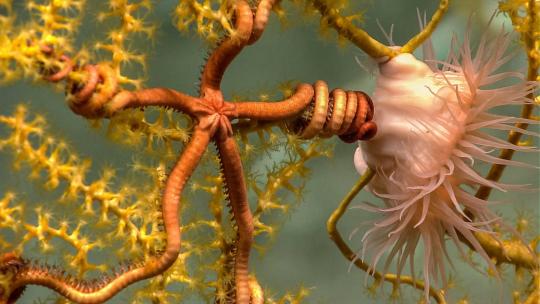
A serpent sea star attached to a sea fan

A panoply of sponges, worms, and squat lobsters
2 notes
·
View notes
Photo

Part of the most remote island archipelago on Earth, Papahānaumokuākea Marine National Monument supports a reef ecosystem with more than 7,000 marine species and is home to many species of coral, fish, birds and marine mammals. This includes the endangered Hawaiian monk seal, the endangered leatherback and hawksbill sea turtles. A Hawaiian monk seal naps on the beach with a rainbow on the horizon. Photo by Mark Sullivan, NOAA/HMSRP, NOAA Ship Okeanos Explorer.
#public lands#rainbow#rainbow 🌈#cute#cuteness#animal#cute animal#hawaii#national monument#wildlife#nature#wildlife photography#nature photography#monk seal#endangered
7K notes
·
View notes
Text
#gallery-0-13 { margin: auto; } #gallery-0-13 .gallery-item { float: left; margin-top: 10px; text-align: center; width: 33%; } #gallery-0-13 img { border: 2px solid #cfcfcf; } #gallery-0-13 .gallery-caption { margin-left: 0; } /* see gallery_shortcode() in wp-includes/media.php */
Open-mouth feeding, filtering sand eels (Photo by A. H. Kopelman for CRESLI July 18, 2018)
Humpback with seagulls (Photo by A. H. Kopelman for CRESLI July 15, 2018)
Humpback (Photo by A. H. Kopelman for CRESLI July 15, 2018)
Humpback (Photo by A. H. Kopelman for CRESLI July 11, 2018)
Short-beaked common dolphins (Photo by A. H. Kopelman for CRESLI July 8, 2018)
Great shearwater (Puffinus gravis) (Photo by A. H. Kopelman for CRESLI Aug. 1, 2018)
Bottlenose dolphins (Photo by A. H. Kopelman for CRESLI Aug. 1, 2018)
Humpback whale (Photo by A. H. Kopelman for CRESLI Aug. 8, 2018)
Fin whale mom (Photo by A. H. Kopelman for CRESLI Aug. 15, 2018)
Juvenile humpback (Photo by A. H. Kopelman for CRESLI Aug. 22, 2018)
Minke whale fins (Photo by A. H. Kopelman for CRESLI Aug. 26, 2018)
Scopoli’s Shearwater (Photo by A. H. Kopelman for CRESLI Aug. 26, 2018)
Humpback whale tail fin (Photo by A. H. Kopelman for CRESLI Aug. 26, 2018)
Your home turf may not be the first place that comes to mind, however, Long Island is among the best places to go whale watching in the world. The waters beyond the tip of this fish-shaped landmass we call home are home to several species of whales, including humpbacks, fin whales, minke whales and North Atlantic right whales, not to mention dolphins, porpoises, seals, sea turtles, sea birds and even flying fish. Departing from Montauk, Viking Fleet’s five-hour tour is the perfect way to see these creatures when they come to the surface to say hello.
The Coastal Research and Education Society of Long Island (CRESLI) partners with Viking Fleet to operate whale-watching cruises during the peak season from July 1 through Labor Day. The nonprofit organization conducts research while also educating the public about marine mammals and the environment they live in.
Cofounder, Senior Scientist and President of CRESLI Dr. Artie Kopelman narrates the cruise. Eager to share his 31 years’ worth of knowledge with passengers, he leads the tour with enthusiasm that keeps everyone aboard interested and informed.
“I’ve seen more interest [in recent years]—particularly regarding whales in the western New York Bight area and whale-watching trips and research being conducted by friends in and around New York City,” Kopelman said, noting that CRESLI works closely with researchers all over in order to share knowledge.
#gallery-0-14 { margin: auto; } #gallery-0-14 .gallery-item { float: left; margin-top: 10px; text-align: center; width: 33%; } #gallery-0-14 img { border: 2px solid #cfcfcf; } #gallery-0-14 .gallery-caption { margin-left: 0; } /* see gallery_shortcode() in wp-includes/media.php */
Minke whale breaches the water (Photos by Kimberly Lovisi)
Montauk Point Lighthouse
A lot has changed since the late 1980s when Kopelman first became a whale-watching volunteer, with Okeanos Ocean Research Foundation. These days, it’s possible to identify more than 150 different fin whales on one trip, but three decades ago, he regularly saw more.
The decrease could have something to do with warming sea temperatures. “Prior to 2009, ‘inshore’ bottlenose dolphins were rarely seen north of New Jersey,” he said. “They are a species that shifted their range northward.”
News is positive and negative for humpback whales. “I’ve seen an increase in near-shore sightings of humpbacks and the species is doing well through much of its range [globally],” Kopelman said.
But he’s also seen a spike in humpback deaths since 2016. A significant number of whales have shown signs of human interaction—evidence of entanglement with ships or being struck by ships. This is why he seeks to educate others.
“Marine mammals are the sentinels of the health of our ocean ecosystems. They are also threatened today…by human activities,” said Kopelman. “Climate change, habitat destruction, unsustainable harvests, ubiquitous plastic pollution, noise pollution and unconstrained resource utilization at the expense of ecosystem services and wildlife is devastating to marine mammals and to all other living things.”
In addition to sharing interesting facts and figures about the animals passengers are seeing, as a naturalist he shares his passion for ocean conservation by offering advice on how to keep the oceans healthy. For example, he warns not to release helium balloons into the air. When mylar and party balloons land in the ocean, they can choke or strangle sea creatures.
He also discussed the practice of “scientific whaling” in countries like Iceland and Japan, which are blatant attempts to circumvent international regulations.
Kopelman is a professor of science and ecology at SUNY Fashion Institute of Technology, where he teaches a course called “Ecology and Environmental Problems: No More Business As Usual.”
A minke whale catches some rays on a warm August day. (Photo by Kimberly Dijkstra)
“How awful would a world without whales be?” he asked. “We can do better. We must do better to ensure that our children and their children get to live in a healthy world, on a healthy planet, with healthy oceans. We have to change the paradigm and embrace sustainability in all aspects.”
Kopelman has had many memorable experiences during his long career. In 1989, a humpback whale breached right near the ship and, in his surprise, exclaimed a slip of profanity into the microphone.
“I also remember the day in 2015, when we were coming back from a long trip with no whales only to encounter two North Atlantic right whales—the rarest of the baleen whales—just a few miles from Montauk Point,” he added.
In the Long Island area, whale-watching season takes place from July through the beginning of September. The Viking Starship goes out twice a week, on Wednesdays and Sundays, throughout the whole season, barring bad weather.
There’s no bad seat on the Viking Starship. Benches that line the port and starboard sides on the main level and upper deck provide an unobstructed view of the whales when they choose to show themselves. And if you need a brief respite, the seats inside the cabin are a comfortable place to rest.
#gallery-0-15 { margin: auto; } #gallery-0-15 .gallery-item { float: left; margin-top: 10px; text-align: center; width: 33%; } #gallery-0-15 img { border: 2px solid #cfcfcf; } #gallery-0-15 .gallery-caption { margin-left: 0; } /* see gallery_shortcode() in wp-includes/media.php */
Viking Fleet departs from a harbor in Lake Montauk (Photos by Kimberly Dijkstra)
Passengers scan the seas for whale activity.
A glimpse of a humpback
Everyone leans over to catch the whale sighting
Minke whales are characterized by the white underside of their flippers
The big splash
A sassy seagull comes in for a landing.
Sunset begins
Sun dips down behind the clouds
End of an exciting afternoon
The cruise takes you about 12 nautical miles off shore, though sightings are possible at any time. The excitement on the adults’ faces match that of the children whenever the boat slows down and everyone rushes to the side of the boat to catch a glimpse. There’s nothing quite as spectacular as seeing a 25-ton creature emerge from the ocean and plunge back in with a great big splash.
There are a few things you should make sure to bring when you take the cruise—a hat, sunscreen, sunglasses and an extra layer or two for when it gets chilly or windy out on the water. It’s also a great idea to bring binoculars or a camera, preferably one with a long lens and fast shutter.
Food and beverages are available, including water, coffee, tea, hot chocolate, soda, beer, breakfast items, sandwiches, burgers and hot dogs. However, you are welcome to pack a lunch and snacks for the journey.
Viking/CRESLI’s whale-watching cruise costs $75 for adults, $49 for children 5-12 and is free for children under the age of 5. Visit vikingfleet.com for schedules and tickets.
For a more immersive whale-watching experience, Viking Fleet and CRESLI also offer 3-day offshore cruises through the Great South Channel to Martha’s Vineyard and back. In winter and spring, the organizations team up again to host seal cruises and walks.
View more of Dr. Artie Kopelman’s incredible cruise photos on Flickr.
For more information about CRESLI, visit cresli.org.
There's still time to take a whale-watching cruise in Montauk with Viking Fleet and CRESLI! Long Island Weekly chats with ecologist Dr. Artie Kopelman and shares photos of whales, dolphins, birds and more from an exciting trip out to sea. Your home turf may not be the first place that comes to mind, however, Long Island is among the best places to go whale watching in the world.
0 notes
Text
What we can do to better protect the ocean
NOAA Okeanos Explorer Program, Our Deepwater Backyard: Exploring Atlantic Canyons and Seamounts 2014.
What lies beneath the deep, dark expanse of the ocean is something that has fascinated sailors, fishermen, adventurers, poets and explorers for centuries.
How could residents of New England, for instance, have known that beneath the coastal waters lies a chain of extinct undersea volcanoes and canyons as deep as the Grand Canyon and mountains as high as any found east of the Rockies, harboring rare and endangered whales, sea turtles and fishes and coral as old as the Redwoods?
We have glimpsed this and other worlds beneath the waves thanks to advances in science and technology.
Ocean-going ships and submarines provide a window into the deep. In shallower and warmer seas, scuba-diving scientists have documented a similarly breathtaking, but previously unappreciated, diversity of life. We’ve discovered an unimaginable underwater world. Strange life forms. Unique species. Mysteries waiting to be solved.
But technology also allows us to access, disturb and eliminate these special places, putting them, and often ourselves, at risk. A single pass of a fishing trawler or mining gear can destroy centuries-old species and habitats, including nursery grounds for important fisheries.
Fortunately, governments are increasing the number of marine protected areas, or MPAs, in the ocean. Areas categorized as MPAs mean that something inside is protected, although often not much. However, two MPA subcategories are essential to achieving the goals of protecting ocean ecosystems, improving resilience in the face of multiple environmental changes and providing benefits for both nature and people.
“Fully protected areas” mean no extractive activities are allowed, while “strongly protected areas” mean no commercial and only minimal recreational extractive activities are allowed. The vast majority of MPAs do not fall into either of these two categories and are called “partially … Read More Here...
0 notes
Text

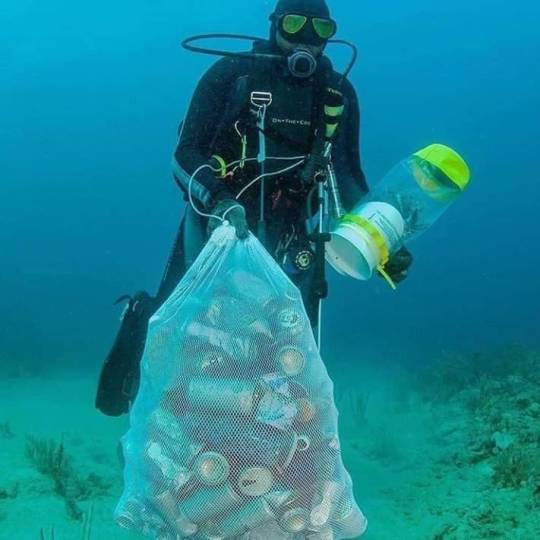
O-K-E-A-N-O-S
#okeanos#ocean#plastic#pollution#plastic pollution#plastic products#plastic people#ocean turtle#turtles#turtle#marine life#planet#love#death#respect#nature#marine reserve#marine research#indian ocean#ocean waves#atlantic coast#pacific ocean#adventure#lifestyle#new life#real life#life#my life
8 notes
·
View notes
Text
undefined
youtube
#sailing#ocean#waves#underwater#whale#okeanos#seascape#sea#shark#jellyfish#nature#sea turtle#ocean waves#whales#adventure#water#wave#sailboat#boat#wildlife#travel#humpback whale#mediterranean#water aesthetic#wave photography#animals#marine life#orca#sperm whale#big waves
20 notes
·
View notes
Photo

30 notes
·
View notes
Photo
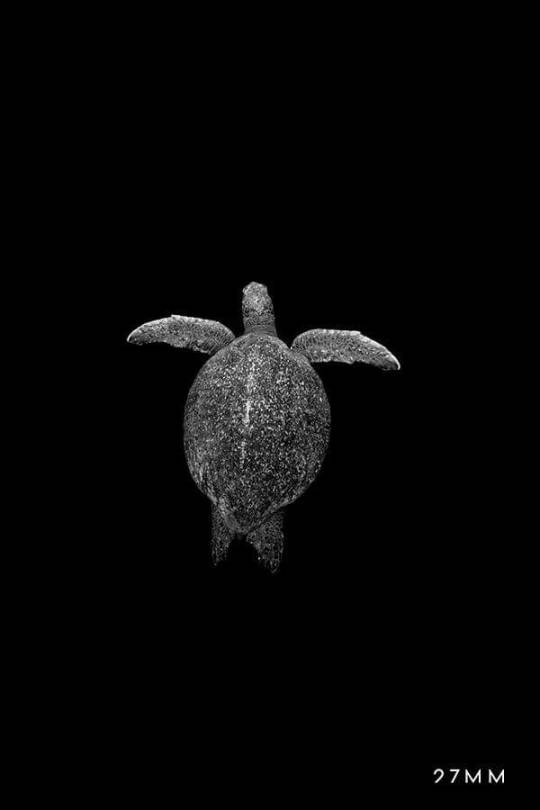
Sea Turtle. Galapagos, Pacific Ocean. www.27MM.net
#27MM#sea turtle#galapagos#ocean#traveling#migration#nature#wild life#wild animals#okeanos#indianocean#island#planet#earth#respect#marine life#marine creatures#love
6 notes
·
View notes
Photo
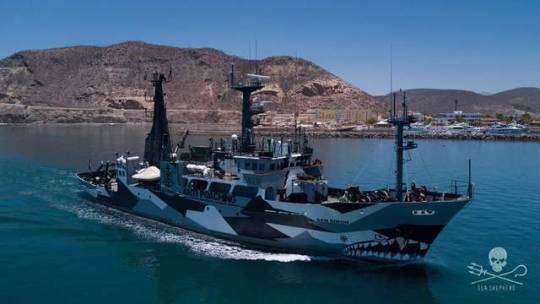
The MV Sam Simon is in Italy After its successful winter campaign Milagro 3 in Mexico with the MV Farley Mowat to protect the Vaquita dolphin the MV Sam Simon has arrived today in La Spezia Italy. The ship will spend a few weeks in port at “Molo Italia”, getting ready for future campaigns. After over 8 months at sea the ship needs a lot of supplies so please consider sending us donations or if you are in La Spezia you can drop by to see the ship and bring supplies. You can consult the Sam Simon’s wish list here: https://www.seashepherdglobal.org/get-involved/wish-lists/ Thank you for your support.
#sea shepherd#warrior#nature#planet earth#ocean#marinelife#biology#okeanos#whale#dolphin#animals#mammals#shark#turtle#save
1 note
·
View note